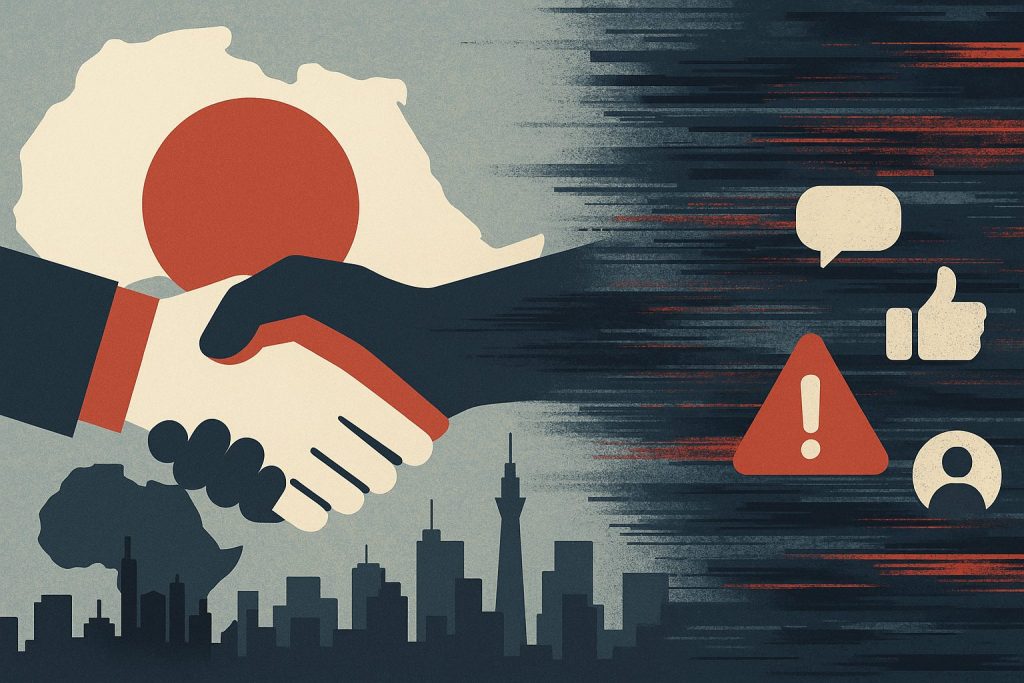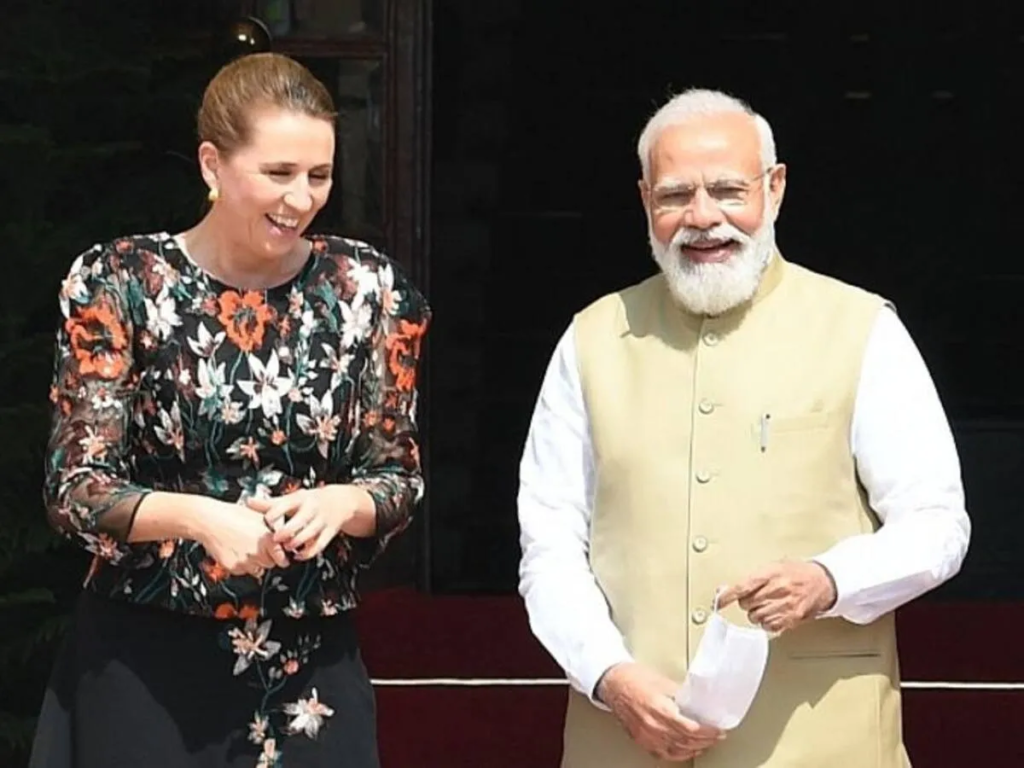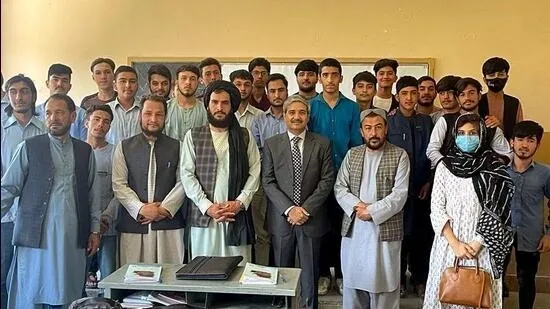
Prof. Habib Al Badawi
The Architecture of Misunderstanding
The “Partner City” initiative, conceived as a cornerstone of Japan’s soft diplomatic engagement with Africa through the Tokyo International Conference on African Development (TICAD), represented an ambitious yet fundamentally modest vision of international cooperation. By establishing formal partnerships between four Japanese municipalities—Nagai, Kisarazu, Sanjo, and Imabari—and the corresponding African nations of Tanzania, Nigeria, Ghana, and Mozambique, the Japan International Cooperation Agency (JICA) sought to transcend the limitations of traditional state-to-state diplomacy. The program embodied a philosophy that genuine international understanding emerges not from conference rooms in capital cities, but from the organic connections forged between communities, particularly through youth engagement and cultural exchange.
Yet within hours of its announcement, this carefully crafted initiative found itself transformed into something entirely alien to its creators’ intentions. What had been designed as a symbol of friendship and mutual enrichment became, in the distorted mirror of social media interpretation, a sinister scheme for demographic replacement. The transformation was so complete and so rapid that it left municipal officials, JICA administrators, and even the Ministry of Foreign Affairs scrambling to defend a program that bore no resemblance to the inflammatory caricature circulating online.
This metamorphosis from partnership to panic reveals profound vulnerabilities in how democratic societies process information about international engagement in the digital age. The incident serves as a microcosm of broader anxieties about globalization, immigration, and cultural change that simmer beneath the surface of many developed nations. More troublingly, it demonstrates how easily these anxieties can be weaponized through deliberate misrepresentation or innocent misunderstanding, creating public opposition to policies that might otherwise enjoy broad support.
The Alchemy of Viral Misinformation
The transformation of JICA’s initiative into a supposed immigration scheme illustrates the peculiar alchemy by which information mutates in digital environments. The original announcement, delivered in the measured language of international development cooperation, emphasized cultural exchange, youth development, and grassroots diplomacy. These concepts, while admirable, lack the emotional urgency that drives viral content. They speak about long-term relationship building rather than immediate threats or opportunities.
The mutated version that captured public attention operated on entirely different emotional frequencies. Claims of “special visas” and “abandoning one’s birthplace” activated primal fears about territorial integrity and cultural preservation. This reframed narrative possessed what digital communication specialists recognize as a high “virality quotient”—it was simple, emotionally charged, and appeared to reveal hidden truths about government intentions. The transformation was further accelerated by the algorithmic preferences of social media platforms, which prioritize engagement over accuracy and amplify content that generates strong emotional responses.
The process of mutation was not random but followed predictable patterns. Initial misinterpretations by social media influencers provided the seed content, which was then amplified by users predisposed to view government initiatives with suspicion. The narrative gained false credibility through repetition and cross-referencing, as multiple sources began citing each other in a closed loop of reinforced misinformation. Most insidiously, legitimate sources inadvertently lent credibility to the false narrative when Nigerian government websites and local media outlets published materials that could be interpreted as supporting the “special visa” claim.
This digital telephone game demonstrates how meaning can be completely inverted through successive iterations of interpretation. Each retelling stripped away nuance and context while adding emotional charge and ideological interpretation. By the time the story reached its peak circulation, it bore virtually no relationship to the original policy announcement, yet it commanded far more public attention than the truth ever had.
The Fragility of Institutional Authority
The Partner City controversy exposed the profound fragility of institutional authority in the face of viral misinformation. Despite the involvement of multiple levels of government—from municipal mayors to the national Ministry of Foreign Affairs—official clarifications struggled to match the reach and emotional impact of the false narrative. This asymmetry reveals a fundamental shift in how authority functions in democratic societies.
Traditional institutional communication operates on principles of accuracy, deliberation, and formal process. Official statements are carefully crafted, legally vetted, and distributed through established channels. However, these virtues become liabilities in digital environments that reward speed, emotion, and engagement over precision. While JICA and municipal officials were crafting measured responses explaining the true nature of their program, millions of social media users were already consuming and sharing simplified, emotionally charged versions of the story.
The incident particularly highlighted the limitations of reactive communication strategies. By the time officials recognized the scale of the misinformation problem, the false narrative had already achieved massive penetration across digital platforms. Corrective messaging, no matter how accurate or authoritative, faced the nearly impossible task of displacing an established narrative that had already shaped public opinion. Research in cognitive psychology confirms that false information, once internalized, proves remarkably resistant to correction, particularly when it aligns with pre-existing beliefs or fears.
Moreover, the controversy demonstrated how local governments, despite their proximity to citizens, can be overwhelmed by digital-age information warfare. Municipal officials in Nagai and Kisarazu found themselves fielding hundreds of inquiries about a program they had participated in designing, forced to repeatedly explain that their intentions bore no resemblance to the inflammatory accusations circulating online. This placed enormous strain on local administrative capacity and diverted resources from actual governance responsibilities.
Cultural Anxieties and the Politics of Demographic Change
The intensity of public reaction to the Partner City initiative cannot be understood purely as a response to misinformation. The false narrative gained traction precisely because it resonated with deeper anxieties about Japan’s demographic future and cultural identity. Japan faces one of the world’s most severe population decline challenges, with birth rates well below replacement level and a rapidly aging society. These demographic realities have generated ongoing debates about the necessity and desirability of increased immigration, touching on fundamental questions about national identity and cultural continuity.
In this context, any government initiative involving foreign partnerships becomes freighted with implications far beyond its stated purpose. The phrase “partner cities” itself proved problematic, as it could be interpreted as suggesting a form of equivalence or merging that threatened local identity. The designation of these cities as “African hometowns” was particularly inflammatory, as it seemed to suggest a rebranding of Japanese spaces according to foreign identities.
The controversy also revealed the extent to which immigration debates in Japan have become entangled with broader concerns about globalization and cultural sovereignty. For many citizens, the Partner City initiative represented not just a potential immigration program but a symbol of Japan’s subjugation to international pressures and globalist agendas. This interpretation transformed a voluntary municipal participation in an exchange program into evidence of national authorities forcing unwanted change upon local communities.
The emotional intensity of the response suggests that underlying these specific fears about the Partner City program were much larger anxieties about Japan’s ability to maintain its cultural distinctiveness in an increasingly interconnected world. The initiative became a lightning rod for concerns that had little to do with the actual program but everything to do with broader questions about Japan’s future trajectory as a nation.
The Echo Chamber Effect and Cross-Border Information Pollution
One of the most sophisticated aspects of the Partner City misinformation campaign was its cross-border dimension. The false narrative was not confined to Japanese social media but created feedback loops between Japanese and African information environments. When Nigerian government websites or local African media outlets published information that could be interpreted as supporting the “special visa” claim, this content was quickly circulated back to Japanese audiences as “proof” that the immigration interpretation was correct.
This cross-border validation mechanism represents a new frontier in misinformation dynamics. In previous eras, foreign media coverage might have taken days or weeks to reach domestic audiences, allowing time for context and correction. Digital platforms now enable instantaneous circulation of content across linguistic and cultural barriers, often stripped of the context necessary for accurate interpretation. Well-intentioned promotional materials from African partners, designed to attract interest in legitimate exchange opportunities, were recontextualized as evidence of a secret immigration scheme.
The incident also demonstrated how different information ecosystems can inadvertently amplify each other’s distortions. African audiences, eager for opportunities for international engagement, may have interpreted the partnership announcements more optimistically than Japanese officials intended. When this enthusiasm was expressed online and then translated back into Japanese social media discussions, it appeared to confirm the fears of critics who saw the program as primarily benefiting foreign rather than Japanese interests.
This cross-border echo effect creates challenges for international cooperation initiatives. Program designers must now account not only for domestic misinterpretation but also for the ways their initiatives might be understood, reinterpreted, and fed back through foreign information environments. The complexity of managing these multi-layered communication challenges may discourage valuable international cooperation simply because the reputational risks have become too difficult to manage.
The Algorithmic Amplification of Fear
The Partner City controversy provides a textbook example of how social media algorithms systematically favor content that generates strong emotional responses, regardless of its accuracy. Posts claiming that the initiative represented a secret immigration scheme garnered millions of views, while official clarifications from government sources received a fraction of that engagement. This disparity reflects the fundamental design of platforms optimized for user attention rather than information quality.
Fear-based content possesses inherent advantages in algorithmic ranking systems. It generates immediate emotional responses, prompts sharing behavior, and encourages prolonged engagement as users seek additional information or express their concerns. The false narrative about special visas and forced resettlement contained all the elements that digital platforms are designed to promote novelty, emotional intensity, and apparent relevance to users’ existing concerns.
The algorithmic amplification created a self-reinforcing cycle where increased visibility generated more engagement, which in turn increased visibility. Users who might never have heard of TICAD or international development cooperation found themselves consuming and sharing content about Japanese immigration policy. The platforms’ recommendation systems then identified these users as interested in immigration-related content, exposing them to additional posts that reinforced the false narrative.
This dynamic reveals a fundamental tension between the business models of social media platforms and the information needs of democratic societies. Platforms profit from engagement regardless of whether that engagement is based on accurate information or serves the public interest. Well-intentioned policy initiatives like the Partner City program become casualties of this misalignment, as measured, truthful communication cannot compete with sensationalized distortions in the attention economy.
Institutional Learning and Adaptive Capacity
The response to the Partner City controversy revealed both the strengths and limitations of Japanese institutional adaptation to digital-age communication challenges. The rapid mobilization of multiple levels of government—from municipal mayors to the Ministry of Foreign Affairs—demonstrated institutional capacity for crisis response. However, the reactive nature of this response highlighted the absence of proactive communication strategies designed for digital environments.
The fact that official clarifications had to be issued “repeatedly,” as noted in the documentation, suggests that even authoritative denials struggle to achieve definitive resolution in fragmented information landscapes. Each clarification may have satisfied some audiences, while others remained unexposed to corrective information or resistant to changing their established beliefs. This pattern points to the need for communication strategies that anticipate misinterpretation rather than simply responding to it after the fact.
The incident also exposed the inadequacy of traditional public communication methods for addressing digital-age misinformation. Press releases and official statements, while maintaining institutional credibility, lack the format and distribution mechanisms necessary to compete with viral social media content. Government communications teams trained in traditional media relations found themselves poorly equipped to manage information crises that spread faster than their institutional response capabilities.
Perhaps most significantly, the controversy revealed how unprepared international development organizations are for the domestic political implications of their work. JICA, as an agency focused on external cooperation, had limited experience managing domestic public opinion about its initiatives. The assumption that a benign cultural exchange program would generate little domestic controversy proved catastrophically wrong, suggesting the need for development agencies to invest seriously in domestic communication capacity.
The Geopolitical Implications of Narrative Warfare
Beyond its immediate impact on municipal operations and public understanding, the Partner City controversy carries significant implications for Japan’s broader engagement with Africa and its role in international development cooperation. The incident demonstrated how easily soft power initiatives can be undermined by domestic misinformation, potentially constraining Japan’s ability to pursue international partnerships that require public support or municipal cooperation.
The controversy also risked sending mixed signals to African partners about Japan’s commitment to genuine cooperation. While African governments and civil society organizations were preparing to engage with Japanese municipalities as equal partners in development initiatives, they found themselves witnessing a Japanese domestic debate that characterized African engagement as a threat rather than an opportunity. This dissonance between international partnership rhetoric and domestic political reality could undermine the trust necessary for effective cooperation.
More broadly, the incident illustrates how information warfare tactics can be deployed against international cooperation itself. Whether the initial misinformation was deliberately fabricated or emerged through innocent misunderstanding, its effect was to create domestic opposition to Japan’s international engagement. This pattern could be replicated against other forms of international cooperation, making societies more inward-looking and suspicious of global engagement.
The Partner City case thus serves as a warning about the fragility of the domestic political foundations for international cooperation. Even the most well-intentioned initiatives require sophisticated communication strategies that can withstand the distortions and amplifications of digital information environments. Failure to invest in these capabilities risks not only individual program failures but also a broader retreat from international engagement.
Lessons for Digital-Age Diplomacy
The Partner City initiative’s transformation from cooperation symbol to controversy flashpoint offers crucial insights for conducting international relations in an era of information abundance and institutional skepticism. The incident demonstrates that successful international cooperation now requires as much attention to domestic communication strategy as to actual program implementation.
Future initiatives must be designed with “narrative resilience” as a core requirement. This means anticipating potential misinterpretations and building communication strategies that can rapidly address false claims before they achieve viral circulation. It also requires understanding that international cooperation initiatives will inevitably be interpreted through the lens of domestic political debates, regardless of their actual scope or intent.
The controversy also highlights the need for international partners to coordinate their communication strategies more carefully. The divergent messages from Japanese and African sources about the nature of the partnership created opportunities for misinterpretation that were quickly exploited. Future cooperation initiatives must include explicit communication protocols that ensure all partners present consistent and mutually reinforcing messages about their joint activities.
Perhaps most importantly, the incident suggests that public education about international cooperation cannot be left until the moment specific initiatives are announced. The Japanese public’s susceptibility to immigration-related misinformation reflects deeper gaps in understanding about how international development cooperation works and why it serves Japanese interests. Building this foundational understanding requires long-term investment in public education that prepares citizens to evaluate international initiatives critically but constructively.
The Broader Democratic Challenge
Ultimately, the Partner City controversy represents a manifestation of challenges facing democratic societies worldwide as they struggle to maintain informed public discourse in digital information environments. The incident reveals how easily factual policy discussions can be overwhelmed by emotional narratives that bear little relationship to reality but carry enormous political force.
These dynamic poses fundamental questions about democratic governance in the twenty-first century. If voters’ opinions about government policies are increasingly shaped by viral misinformation rather than accurate information, how can democratic institutions maintain legitimacy and effectiveness? The Partner City case suggests that traditional assumptions about an informed citizenry may no longer be held in environments where information production and distribution have been democratized but not necessarily improved.
The incident also illustrates the international dimensions of domestic information challenges. Japanese citizens’ understanding of their government’s Africa policy was shaped not only by domestic sources but also by content originating in African countries and filtered through social media algorithms. This creates new vulnerabilities for democratic decision-making, as domestic public opinion can be influenced by foreign information sources operating with different incentives and understandings.
The Partner City controversy thus serves as more than a case study in policy communication failure. It represents a diagnostic moment that reveals deeper tensions between democratic governance, international cooperation, and digital information environments. The resolution of these tensions will likely determine whether democratic societies can maintain their capacity for constructive international engagement or will retreat into defensive isolation driven by misinformation and fear.
Toward Information Resilience
The lessons of the Partner City incident extend far beyond Japan’s Africa policy to encompass fundamental questions about how democratic societies can build resilience against information manipulation. The controversy demonstrates that technical solutions alone—fact-checking, platform moderation, and government clarifications—are insufficient to address the underlying dynamics that make misinformation campaigns successful.
Building genuine information resilience requires addressing the social and psychological factors that make false narratives appealing. In the case of the Partner City initiative, the immigration misinformation succeeded because it provided a simple explanation for complex anxieties about demographic change and cultural preservation. Effective counter-strategies must therefore address these underlying concerns directly rather than simply correcting factual errors.
This suggests the need for more sophisticated approaches to public communication that acknowledge and engage with citizens’ legitimate concerns while providing accurate information about government policies. Rather than dismissing fears about immigration or cultural change as ignorant or xenophobic, officials must demonstrate how initiatives like the Partner City program serve citizens’ interests in maintaining cultural vitality and international competitiveness.
The incident also underscores the importance of building media literacy capabilities that enable citizens to critically evaluate information regardless of its source or emotional appeal. The Japanese public’s susceptibility to immigration-related misinformation reflects broader deficits in digital literacy that make societies vulnerable to manipulation by both foreign and domestic actors seeking to undermine democratic governance.
The Future of International Cooperation
The Partner City controversy arrives at a crucial moment for international development cooperation, as rising nationalism and declining institutional trust challenge the foundations of multilateral engagement worldwide. The incident provides a preview of the communication challenges that international organizations and national governments will face as they attempt to maintain public support for global cooperation initiatives.
The implications extend well beyond Japan’s relationship with Africa. Similar dynamics could easily emerge around other forms of international cooperation, from climate change initiatives to educational exchanges to economic partnerships. As societies become more polarized and information environments fragmented, the domestic political space for international engagement may continue to narrow unless new communication strategies are developed.
The Partner City case suggests that the future viability of international cooperation may depend as much on domestic communication capabilities as on the substantive merits of cooperation itself. Organizations like JICA must develop new competencies in digital communication, narrative management, and public engagement that match the sophistication of the misinformation campaigns they increasingly face.
This evolution requires fundamental changes in how international cooperation is conceptualized and implemented. Programs must be designed not only to achieve their stated development objectives but also to maintain domestic political support in hostile information environments. This may require sacrificing some operational efficiency in favor of communication clarity, investing more resources in public engagement, and accepting that program success will be measured as much by public understanding as by development outcomes.
Conclusion: Partnership in the Age of Misinformation
The transformation of Japan’s Partner City initiative from a symbol of international friendship into a lightning rod for immigration fears serves as a sobering reminder of the challenges facing democratic societies in the digital age. The incident reveals how quickly, and completely well-intentioned policies can be distorted by misinformation, creating public opposition that bears no relationship to actual policy content.
Yet the controversy also demonstrates the resilience of democratic institutions when they respond effectively to information challenges. The rapid mobilization of official clarifications, the transparency of municipal responses to citizen concerns, and the ultimate survival of the partnership program suggest that truth can prevail over fiction when institutions adapt to new communication realities.
The Partner City case will likely be studied for years as an example of how international cooperation initiatives must evolve to succeed in fragmented information environments. Its lessons extend far beyond Japan or Africa to encompass fundamental questions about democratic governance, international relations, and social cohesion in the twenty-first century.
The municipalities of Nagai, Kisarazu, Sanjo, and Imabari did not merely learn a lesson about communication strategy. They experienced firsthand the new realities of conducting public policy in an age where information travels faster than understanding, where emotion often overpowers evidence, and where the gap between policy intent and public perception can become a chasm that threatens the very possibility of constructive international engagement.
As they move forward with their African partnerships, these communities carry with them both the scars of misinformation and the knowledge necessary to build more resilient forms of international cooperation. Their experience serves as both a warning and a guide for the complex work of building bridges across cultures in an age that seems to tear them down. The success or failure of their ongoing partnerships will provide crucial evidence about whether democratic societies can learn to navigate the treacherous waters of international cooperation in the digital age, or whether the forces of misinformation and misunderstanding will prove too powerful to overcome.



